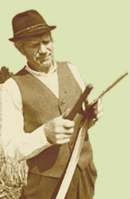Discussions over mire resources: peat and water
Ann Marvet introduces the cover story, featuring peat protection. Three decades ago, mires and mire protection were harshly discussed in Estonia. In new economic conditions, mires have once again drawn the attention of entrepreneurs. The locals, however, are often against the reckless mining of peat. Hydrogeologists and peat scientists have still different views on the issue. The current article creates a frame for the following stories regarding peat extraction.
Estonian peat resources and environmentally friendly usage
Mall Orru gives an overview of applied research in the field of peat extraction. Altogether there are about ten thousand mires with the total territory of over a million hectares, occupying more than a fifth of Estonian territory.
Peat production in Estonia
Heino Reedik demonstrates that peat is a very valuable export article for Estonian economy. If the current extraction rate is sustained, peat will last at least for 900 more years.
Listen to the voice of common sense
Nikolai Laanetu does not agree with the hydrogeologists who claim that bogs do not give out water. The surplus water from rainfall drains down to ground water and feeds waterbodies and wells. Unfortunately, most of the clean water is managed by the drainage system, which leads the water elsewhere.
Peat extraction endangers water resources
Hella Kink confirms the doubts: as a result of peat extraction, the level of ground water in the surrounding area recedes.
On what grounds do we extract peat?
Mati Ilomets reveals that in Estonia, peat extraction exceeds peat deposition by six times. Nevertheless, peat is regarded as a renewable resource in Estonian law. Detailed diagrams indicate that peat is not renewed as fast as it is believed and that in last 50 years, 70 per cent of our mires have disappeared as a result of drainage, peat extraction or afforestation.
Essay
Tiit Kändler compares Estonia to a bird egg.
Landslides natural or human-induced?
Tiit Hang, Alar Rosentau, Peeter Talviste and Volli Kalm portray landslides: their preconditions, mechanisms and causes. The article was inspired by several noteworthy landslides in Pärnu County in spring, 2002. Numerous photos and a map illustrating the locations of the landslides illustrate well this natural phenomenon.
Eesti Loodus enquires
Ain Kallis explains what is apparent temperature.
Leho Luigujõe describes effect of harsh winter on wintering waterfowl.
Paadrema Nature Protection Area
Piret Kiristaja takes the reader to newly founded nature protection area in Pärnu County, West Estonia. The nature protection area consists of a mire with surrounding forest strips. The mire is home for many rare birds, including white-tailed eagle.
European rarities in Estonia
Renno Nellis and Veljo Volke depict the white-tailed eagle, the majestic bird that has restored its viable population in Estonia.
Kadri Tali draws our attention to a small and very modest orchid the fen orchid.
Interview: sewage becomes clean, with fuel over the bargain
Toomas Kukk has interviewed Katrin Heinsoo, an ecologist.
Tree of the year: sugar maple gives syrup and sugar
Urmas Kokassaar writes about the symbol of Canada the sugar maple, which is one of the most valuable trees among those secreting sweet juices.
Practical tips: simple and ecological plank roof
Vello Liiv gives instructions to build plank roofs.
Practical tips: ecological sign simplifies choices for environmentally aware consumer
Külliki Tafel and Andres Viia help the consumers to find the most environment-friendly products and services.
Journey to pampas, the semidesert of Patagonia and the forests of Andes.
Meelis Pärtel, Kersti Püssa, Rein Kalamees and Nele Ingerpuu recall their research trip in South America. They traveled in this childhoods dreamland and saw many natural wonders. Being botanists, they were especially interested in the way nature has developed in this part of the world.
Estonians are acknowledged researchers of Antarctica
Enn Kaup describes the history of Estonian research in Antarctica. Starting with von Bellingshausen, the list of Estonians in Antarctica now includes more than 25 names. Moreover, there is a plan to set up an independent national research station there.
European hare is a newcomer
Anne Kirk convinces the reader about a seemingly unbelievable fact: the European hare, so common in our fields and forests, settled in Estonia only a few centuries ago. Coming from the south, it has now extended its area of distribution even further north.
A life devoted to trees. 100 years from the birth of Eduard Viirok
Heldur Sander depicts the short life of the first Estonian dendrologist.
Traveling river mouths
Arne Kivistik looks at an interesting phenomenon in North-West Estonian nature: the traveling river mouths. Almost each year the river mouths change their location. Map diagrams illustrate the traveling of some of the river mouths.
| 

![[IN ENGLISH]](images/gb.gif)






